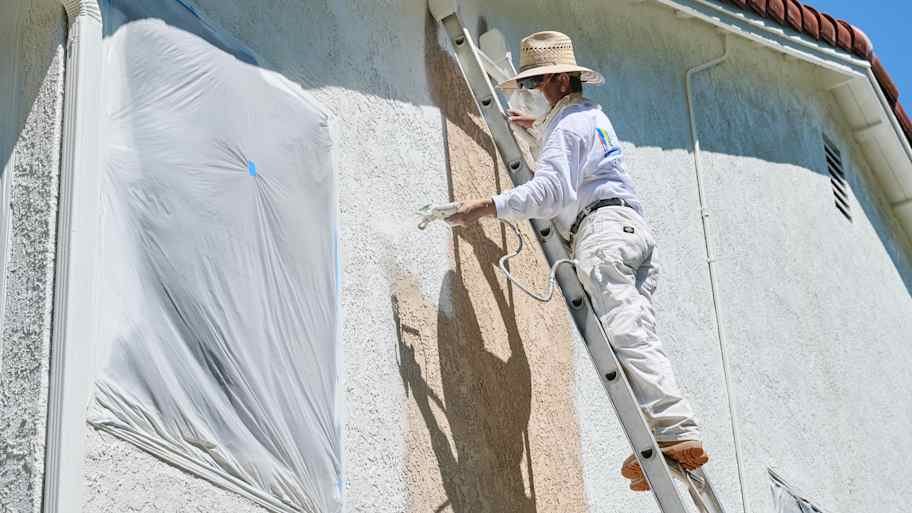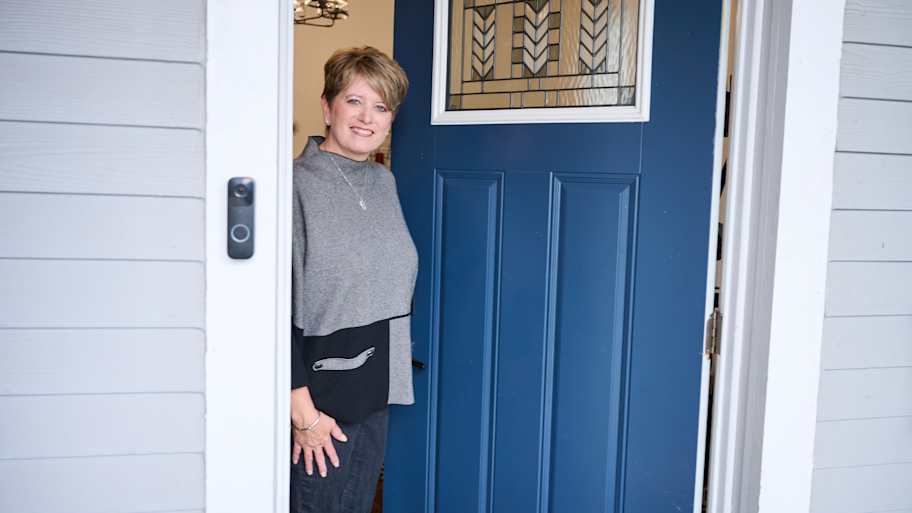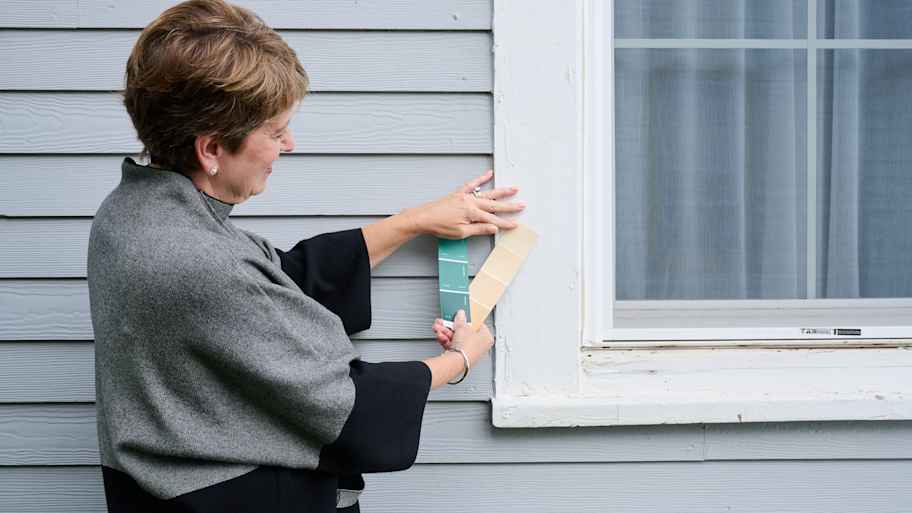Should You Use Ceramic Paint on Your Home’s Exterior?
Ceramic house paint offers more durability, but is it worth the added cost?


Choosing the right paint for your home’s exterior is a big decision. If you’re trying to decide if ceramic paint is right for you, you’ll want to know how it stands up to traditional house paint, like latex. Learn the pros and cons of ceramic versus traditional paint on factors like cost, ease of application, and durability.
How to Choose the Right Ceramic House Paint
Picking a new look for your home is enough to make anyone's head spin, but doubly so if you decide to go with ceramic paint, considering all the options available. Ceramic paint (also called ceramic coating) can be up to 8 times thicker than regular latex paint and can last up to 25 years.
Properly applied, a ceramic coat might be the last paint job your home ever gets, so picking the right one is crucial. Here are just a few things to keep in mind when choosing the right ceramic paint for your home.
Color: Select products that offer the color scheme you need to match the rest of your property.
UV protection: If you're in a hot or sunny climate, paying more for paint with UV coating can extend the life of your paint job while lowering energy bills.
DIY or pro: While you can apply some paints easily if you properly prepare your home's exterior, others are complex to apply.
Moisture management: Some ceramic paint brands offer moisture control to prevent mold and mildew.
Surface: While most house paints are only for siding, many ceramic coatings are versatile enough to be applied to block, brick, shingle roofs, stucco, vinyl siding, and wood.
| Ceramic | Latex |
|---|---|
| Costs more | Less expensive |
| More durable | Less durable |
| Holds up to salt | Dries faster |
| Chip resistant | Easy to clean |
Exterior Paint Pros and Cons: Ceramic vs. Latex
Deciding if ceramic coating is the way to go? Take a look at how ceramic paint stacks up to other options for repainting the exterior of your home.
1. Ceramic Paint

A thick polymer base that bonds to the exterior of your home, ceramic paint is considered an upgrade from ordinary house paint on many fronts.
Pros:
Lasts much longer than regular exterior paint
Waterproof and salt-tolerant properties
No chipping or flaking
Can reduce energy costs
Reduces noise
UV protection
Good moisture management
Works on nearly all construction surfaces
Cons:
More expensive than regular paint, averaging $4 to $7 per square foot
Difficult to touch up and any problem spots may require a redo
2. Latex Exterior Paint (Traditional House Paint)
The most commonly used paint option today, latex exterior paint is an easy, safe solution for slapping on a new coat.
Pros:
Dries quickly to help you get in two coats in one day
Cleans up with soap and water
Low odor
Low VOC
Available in an endless variety of colors
Affordable, averaging $1 to $4 per square foot
Cons:
On a DIY job, latex can dry so quickly that you get brush marks and nicks
Can swell wood
Doesn't coat metal properly
Not durable in extreme conditions
House Paint Comparisons
Curious to know which paint option will add beauty and durability to your home? Take a look at where ceramic and traditional exterior paint shine.
Best for Protection: Ceramic Coating
With brands boasting a finish that dries several times thicker than ordinary house paint, ceramic coating creates a "shell" over your home.
Best for a Quick Weekend Project: Traditional Latex House Paint
If you have zero painting experience, a low-VOC water-based paint may be your best option for getting in two coats quickly.
Best for Mixed-Material Homes: Ceramic Coating
Ceramic coating can be used on essentially any construction materials to give your home a uniform look. If you use traditional paint, you may need to switch between latex and oil paints if your home has a mix of vinyl, wood, and metal. Matching colors between different brands can be a challenge.
Best for Longevity: Ceramic Paint
Lasting anywhere from 10 to 25 years, ceramic paint gives you a lot more durability than traditional exterior paint, which should last for between 5 and 7 years. If you're in an extreme climate, traditional paint can last even less time.
Best for Budget: Traditional Latex House Paint
While the average cost for an exterior latex paint job is $3,700, hiring a pro to apply a complete ceramic coat for your home’s exterior can cost $12,000. If you decide to DIY, traditional latex exterior paint costs from $15 to $30 per gallon compared to $60 per gallon for ceramic paint.
Top Brands of Ceramic Paint

Two brands of ceramic paint lead the market: Rhino Shield® and Liquid Ceramic®. The choice comes down to whether you want to hire a professional or DIY. If you choose Rhino Shield®, you'll need to hire an authorized local dealer to come to your home and apply it. Liquid Ceramic® is available by the bucket so you can apply it yourself.
Rhino Shield®
Rhino Shield® is the brand that people most associate with ceramic coating. It's an elastomeric ceramic coating you can even put on your roof.
Here's what you can expect if you choose Rhino Shield®:
25-year warranty against cracking, chipping, and peeling
Works on wood, stucco, brick, block, vinyl siding, metal, shingle roofs, and more
Complete exterior coating costs range from $10,000–$18,000
Available in over 1,500 colors to let you explore home exterior color trends
UV resistant
Liquid Ceramic®
Popular among DIY fans, Liquid Ceramic® is a ceramic particulate blended with acrylic.
Here's what it offers:
Low VOCs
Eco-friendly
Promised to last three to five times longer than store-bought exterior paints
Thickness is 3.5 times greater than paint
Costs $60 per gallon
One coat equals four coats of some competitors
61% content solid
While ceramic paint costs more upfront, you'll save time and money in the long run on touch-ups and repainting. Ceramic paint is very durable and will protect your home against the harshest climates. But that's also the downside. Once you've picked a color, you're stuck with it for the lifetime of the coat.
Frequently Asked Questions
Ceramic paint can be worth it for certain situations, primarily if you live in harsh weather conditions or extreme temperatures and want a long-lasting paint solution. If you live in a mild climate, plan to change the color frequently, or have budget constraints, traditional paint may work for your needs.
Ceramic paint is not 100% waterproof but does have higher levels of water resistance compared to other exterior house paints. When applied correctly and by a professional, ceramic paint adds moisture protection to a home and can reduce the risk of mold or rot.





- How Long Does Paint Last, and How Can You Tell If It’s Expired?
- What Is the Best Exterior Paint? Here Are the Top 6 Choices
- 5 Best Paints for a Wood Fence
- Types of Paint: Which Is Best for Your Project?
- How to Dispose of Paint Properly
- 8 Exterior House Painting Tips You Should Know
- When Is the Best Time to Paint Your House Exterior?
- 10 Common Painting Mistakes Homeowners Should Avoid
- Latex vs. Acrylic Paint: Which Is Best for Your Next Painting Project?
- Ceiling Paint vs. Wall Paint: What’s the Difference?










